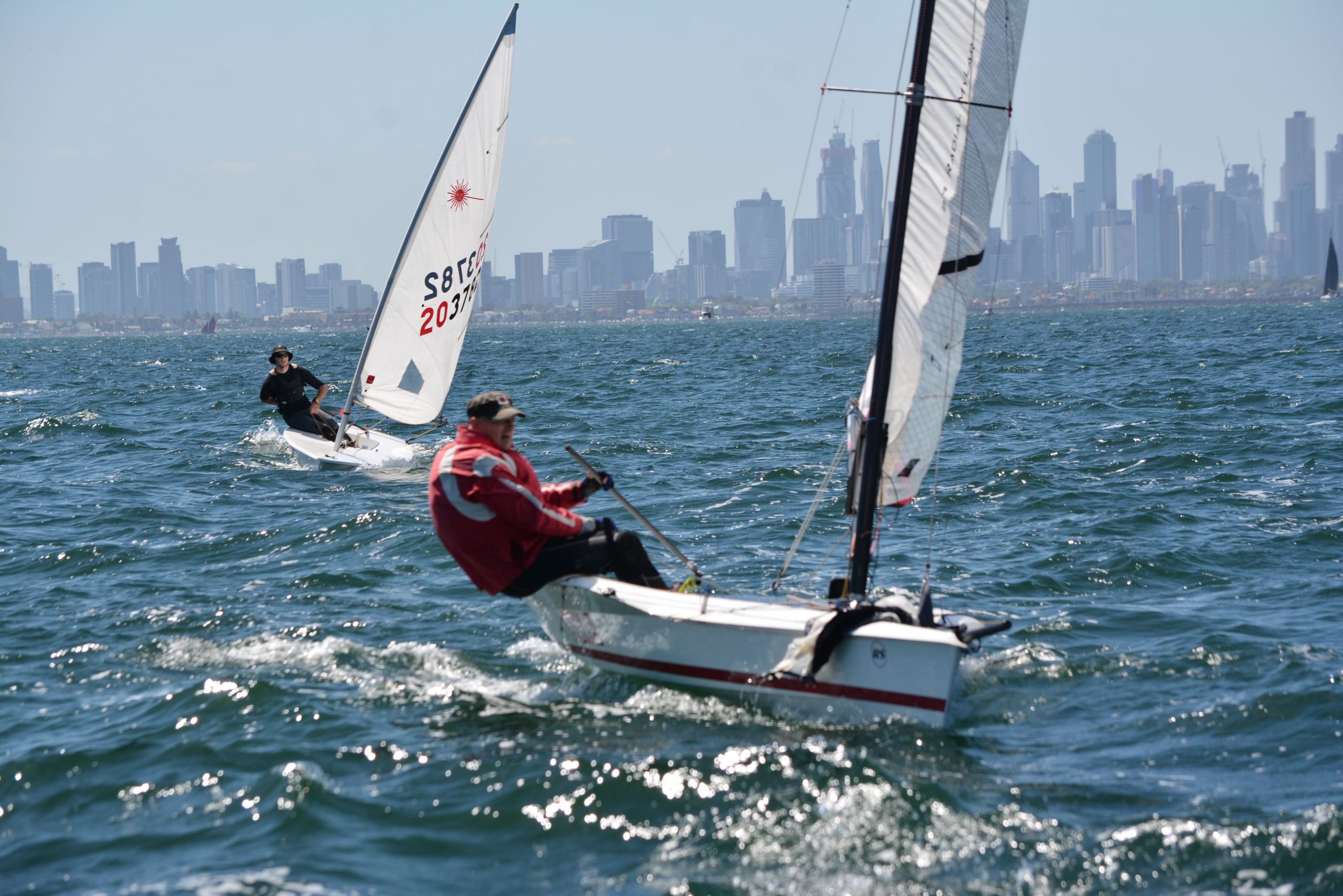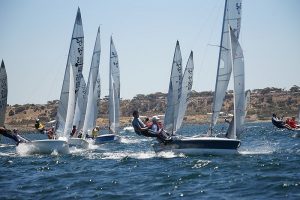

Know When The Wind Is Oscillating. Oscillating shifts are the most common type of wind pattern, so if you’re not sure what the wind is doing assume it is oscillating until you discover otherwise.
It’s very important to figure out whether the wind shifts will be oscillating or persistent, but this is not always easy to
do. There are some visual clues (listed below) that often mean the wind direction will be shifting back and forth.
The wind is blowing offshore.
When the wind is blowing from the shore, it’s almost a sure bet that the land’s irregularities will cause oscillating shifts.
Your headings on each tack go up and down.
Your pre-race compass headings on port and starboard tack fluctuate around an average direction (which stays
roughly the same). Shifts happen fairly quickly, not gradually.
Boats are lifted and headed on both sides of the course.
As you look across the course, you see boats on both tacks on lifts and headers in a somewhat arbitrary pattern. Boats that
are lifted then get headed and vice versa.
You are sailing in a gradient wind after the passage of a cold front.
Oscillating shifts (and puffs) that come with a vertically unstable air mass.
The wind on the water looks patchy and/or puffy.
You look across the course and you can see lighter or darker spots that show puffs or lulls. Sometimes you can even see ripples indicating changes in wind direction. This wind is almost surely oscillating.
On the first beat, each tack is sometimes longer to the windward mark.
As the wind oscillates, so does the long tack to the windward mark. That is, sometimes your bow points closer to the mark on port tack, and sometimes it points closer on starboard tack.
Boats gain (and lose) on both sides of the course.
As you sail up the beat, boats are as likely to pass (or be passed) on the right side as they are on the left. It all depends on who is in phase with the shifts, not on who goes farther to one side.
The ‘favoured’ end of the starting line switches from one end to the other and back again.
In shifty winds, most starting lines are set square to the median breeze. So when the wind is in the right phase the right (committee boat) end of the line is favoured. When the wind is in a left phase, the left (pin) end is favoured.

